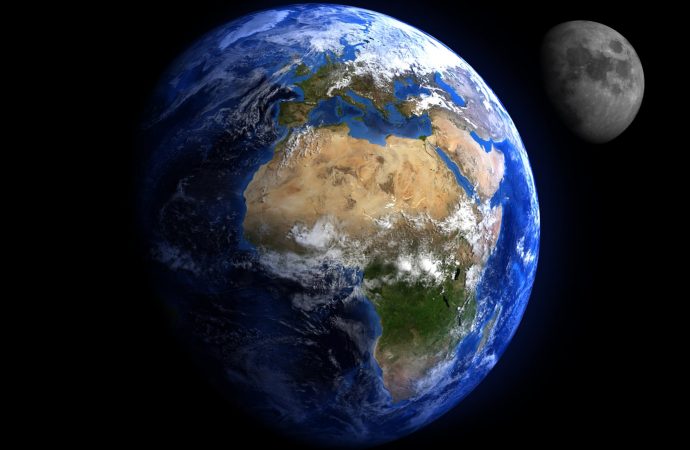Planet and moon have been hit by more asteroids in the past 290m years than at any time in previous billion
The rate at which asteroids are slamming into Earth has nearly tripled since the dinosaurs first roamed, according to a survey of the scars left behind.
Researchers worked out the rate of asteroid strikes on the moon and the Earth and found that in the past 290m years the number of collisions had increased dramatically.
Before that time, the planet suffered an asteroid strike about once every 3m years, but since then the rate has risen to once nearly every 1m years. The figures are based on collisions that left craters at least 10km (6.2 miles) wide.
“The cratering rate changes instantaneously,” said Thomas Gernon, an Earth scientist at the University of Southampton and a fellow of the Turing Institute. “There’s an order of two to three increase in asteroid strikes from 290m years ago.”
The findings suggest that the dinosaurs may have been unfortunate in evolving 240m years ago, just as the odds of being wiped out by a stray asteroid were ramping up. It was one of those impacts, on top of other factors, that did for the beasts 66m years ago.
Many scientists had assumed that asteroid strikes were a rare but constant threat in Earth’s deep history, but the latest study challenges that belief. “I was surprised to see the change,” said Rebecca Ghent, a planetary scientist at the University of Toronto. “There was no reason to think that the rate would be any higher than in the past.”
Writing in the journal Science, the researchers describe how they turned to the moon to examine the violent history of Earth. The Earth and moon are hit by asteroids with similar frequency, but impact craters on Earth are often erased or obscured by erosion and the shifting continents which churn up the crust. On the geologically inactive moon, impact craters are preserved almost indefinitely, making them easier to examine.
Using images from Nasa’s Lunar Reconnaissance Orbiter, the scientists studied the “rockiness” of the debris surrounding craters on the moon. Rocks thrown up by asteroid impacts are steadily ground down by the constant rain of micrometeorites that pours down on the moon. This means the state of the rocks around a crater can be used to date it.
“When you have a fresh impact you get a lot of large rocks that sit around the crater, but over time they get bombarded by small micrometeorites and are transformed into lunar regolith,” said Sara Mazrouei, the first author of the paper and a planetary scientist at Toronto.
The dates revealed that the moon, and by extension the Earth, has suffered more intense asteroid bombardment in the past 290m years than at any time in the previous billion. On Earth there are hardly any impact craters older than 650m years, most likely because they were eroded when the planet became encased in ice in an event known as Snowball Earth.
Christian Köberl, director general of the Natural History Museum in Vienna – who was not involved in the study, said that while there appeared to be a rise in asteroid strikes in the past few hundred million years, the lack of craters on Earth older than 650m years “must be homemade, as a result of terrestrial geological processes”.
William Bottke, a researcher on the team at the Southwest Research Institute in Colorado, said the uptick in asteroid strikes was probably caused by one or more giant space rocks breaking up in the main asteroid belt between Mars and Jupiter about 300m years ago.
When asteroids collide they produce a swarm of fragments that can find their way on to collision courses with the Earth or moon. “If the initial breakup is large enough, the increase in impacts can last for hundreds of millions of years,” he said.
The question now is whether the rate of asteroid strikes is still rising, or perhaps falling back to a lower level. Either way, Ghent believes there is no cause for alarm. “Because large impacts are very rare in the first place, even if you double or triple the probability they are still very rare,” she said.
Source: The Guardian

































Leave a Comment
You must be logged in to post a comment.